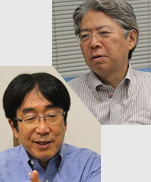
The journey toward realizing superconducting magnetic levitation (maglev) that achieves speeds of up to 500 kilometers an hour has come one step closer to its end, with the emergence of a train known as the linear motor car. JR Central, which is responsible for the operation of the Tokaido Shinkansen line, started work on the construction of the Chuo Shinkansen line for use by the superconducting maglev at the end of last year. The occasion was marked with a ceremony held on December 17, 2014 to pray for safe construction of the line, which will run between JR Central’s Shinagawa Station in Minato Ward, Tokyo and Nagoya Station in Nagoya, Aichi Prefecture. If all goes well, service is scheduled to begin in 2027, when linear motor cars will connect the 285.6-kilometer distance between Shinagawa and Nagoya in as little as 40 minutes. “Superconducting maglev” ... ... [Read more]







